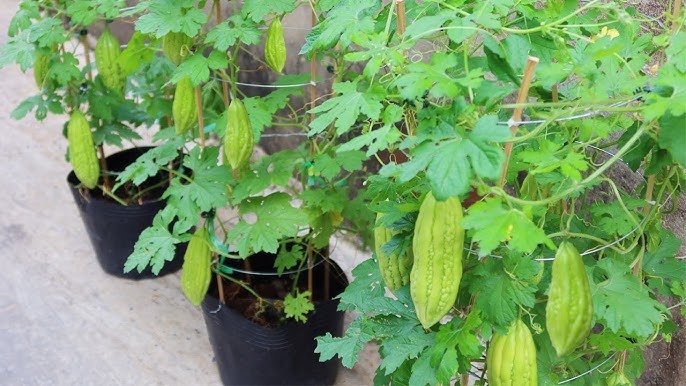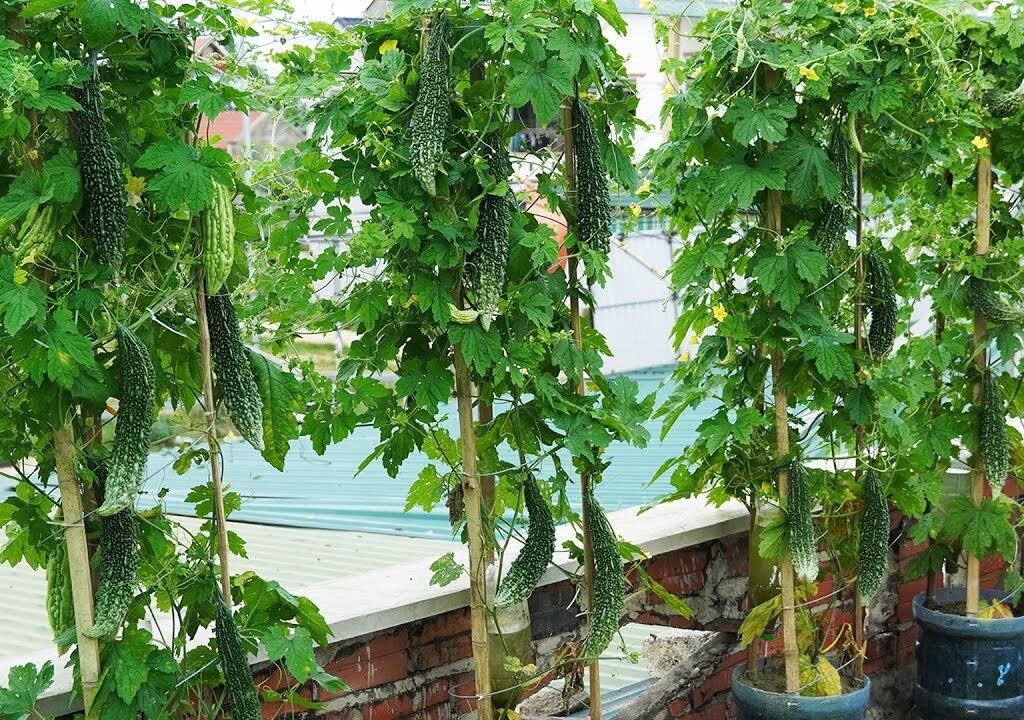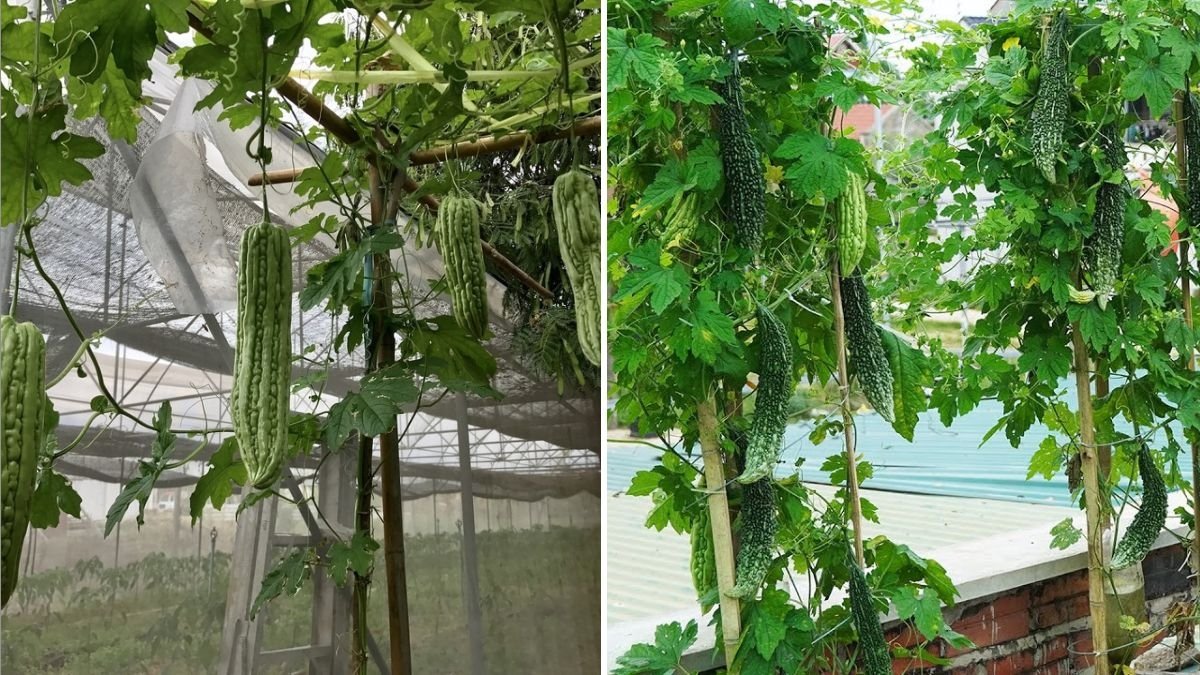If you’ve heard of bitter melon but haven’t yet tried it, you’re not alone. Known for its distinctive appearance and sharp, bitter flavor, bitter melon has been a staple in Asian, African, and Caribbean cuisines for centuries — and it’s finally earning its place in American kitchens and wellness circles.
Packed with nutrients and celebrated for its potential health benefits, especially for blood sugar control and immunity, bitter melon is being hailed as one of the next big superfoods in the U.S. In this comprehensive guide, we’ll explore everything about bitter melon — from its origins and nutritional value to its remarkable health benefits, preparation tips, and creative ways to add it to your diet.
What Is Bitter Melon?

Bitter melon (Momordica charantia), also called bitter gourd or balsam pear, is a tropical vine belonging to the cucumber and squash family. It grows throughout Asia, Africa, and the Caribbean, producing an oblong, green fruit covered in warty bumps.
Despite its name, bitter melon isn’t just another vegetable — it’s a nutrient powerhouse with medicinal properties recognized in traditional healing systems like Ayurveda and Chinese medicine for centuries. Today, American nutritionists, chefs, and wellness enthusiasts are rediscovering this exotic fruit for its health benefits and versatility.
Nutritional Value of Bitter Melon
Bitter melon may not be sweet, but it’s certainly rich in nutrients. One cup (about 94 grams) of raw bitter melon contains:
- Calories: 20
- Carbohydrates: 4 grams
- Protein: 1 gram
- Fiber: 2 grams
- Vitamin C: 93% of the Daily Value (DV)
- Vitamin A: 44% of the DV
- Folate: 17% of the DV
- Potassium: 8% of the DV
- Zinc, Iron, and Magnesium: trace amounts
Low in calories but high in vitamins and antioxidants, bitter melon offers an impressive nutritional punch for such a small fruit.
Health Benefits of Bitter Melon

Bitter melon has earned a reputation as a natural healer, and modern science is catching up with what traditional medicine has known for centuries. Here are its most notable health benefits:
1. Helps Manage Blood Sugar Levels
Bitter melon contains compounds such as charantin, vicine, and polypeptide-P, which have insulin-like effects that help reduce blood glucose levels. Studies suggest that bitter melon may improve glucose tolerance and support insulin sensitivity, making it popular among people managing diabetes or prediabetes.
2. Boosts Immunity
With nearly an entire day’s worth of vitamin C in just one serving, bitter melon helps strengthen the immune system. Its antioxidants protect cells from oxidative stress and fight off harmful pathogens, keeping you healthier year-round.
3. Aids in Weight Management
Low in calories and high in fiber, bitter melon supports healthy digestion and helps you feel fuller longer. It can be a powerful ally in weight-loss diets, especially when replacing higher-calorie side dishes or snacks.
4. Promotes Healthy Skin
Bitter melon’s antibacterial and anti-inflammatory properties can help purify the blood and support clearer skin. In many cultures, bitter melon juice is used as a natural remedy for acne, eczema, and other skin issues.
5. Supports Heart Health
Some studies suggest that bitter melon may help lower “bad” LDL cholesterol and triglyceride levels, reducing the risk of heart disease. Combined with a healthy lifestyle, it can play a role in maintaining cardiovascular wellness.
6. Detoxifies the Body
Bitter melon acts as a natural detoxifier, cleansing the liver and promoting the removal of toxins from the bloodstream. It also supports kidney health and improves digestion.
7. May Have Cancer-Fighting Properties
Emerging research indicates that bitter melon extracts may inhibit the growth of certain cancer cells, including those associated with breast and colon cancer. While more studies are needed, its antioxidant compounds are believed to play a protective role.
Popular Types of Bitter Melon
There are several varieties of bitter melon, but two main types are most common:
1. Chinese Bitter Melon
- Light green with a smooth, bumpy surface.
- Milder in bitterness.
- Commonly used in stir-fries and soups.
2. Indian Bitter Melon
- Dark green, smaller, and more pointed.
- Has deep ridges and a stronger, more pronounced bitterness.
- Popular in curries and stuffed vegetable dishes.
Both varieties can be found in international markets or specialty grocery stores across the U.S.
How to Prepare and Cook Bitter Melon

While bitter melon’s taste can be intense, proper preparation helps tone down the bitterness while retaining its nutritional value.
Step 1: Choose the Right Melon
Look for firm, bright green melons with no soft spots. Smaller fruits tend to be less bitter than larger ones.
Step 2: Slice and Remove Seeds
Cut the melon lengthwise and scoop out the white pith and seeds with a spoon.
Step 3: Reduce Bitterness
- Salt Method: Sprinkle salt on the sliced melon and let it sit for 20–30 minutes. Rinse well before cooking.
- Blanching: Boil the slices in salted water for 2–3 minutes to mellow the bitterness before stir-frying or sautéing.
Delicious Bitter Melon Recipes to Try

Bitter melon’s unique flavor adds depth and complexity to dishes. Here are a few American-approved ways to enjoy it:
1. Stir-Fried Bitter Melon with Eggs
A simple, protein-packed dish popular in Chinese and Filipino cuisine.
- Slice bitter melon thinly and sauté with garlic.
- Add beaten eggs and cook until just set.
- Season with soy sauce, pepper, and sesame oil.
2. Bitter Melon Chips
Perfect for healthy snacking.
- Slice bitter melon thin, toss with olive oil and salt, and bake at 375°F until crisp.
- Light, crunchy, and packed with nutrients!
3. Bitter Melon Curry
A flavorful Indian-inspired recipe.
- Cook bitter melon with onions, tomatoes, turmeric, and cumin.
- Add coconut milk for a creamy, balanced finish that complements the bitterness.
4. Bitter Melon Smoothie
For the adventurous! Blend small amounts of bitter melon with apple, cucumber, lemon juice, and honey. The sweetness of fruit balances the bitter notes.
5. Bitter Melon Soup
Simmer sliced bitter melon with chicken broth, garlic, and tofu for a light, cleansing soup perfect for detox days.
How to Grow Bitter Melon in the U.S.
Good news for home gardeners — bitter melon thrives in warm, sunny climates and can easily be grown in American gardens, especially in southern states.
1. Planting Conditions
- Prefers temperatures between 75°F and 85°F.
- Requires well-draining soil and full sun exposure.
2. Sowing Seeds
- Soak seeds in warm water for 24 hours before planting to aid germination.
- Plant 1 inch deep and 12–15 inches apart in rows or containers.
3. Watering
- Keep the soil consistently moist but not waterlogged.
- Water at the base to prevent fungal growth on leaves.
4. Harvesting
- Bitter melons are ready to harvest about 60–70 days after planting.
- Pick when they’re firm and about 4–6 inches long for best flavor.
Homegrown bitter melon tastes fresher and milder than store-bought varieties, making it a great choice for organic gardeners.
Tips for Reducing Bitterness
If you’re new to bitter melon, the taste can be strong at first. Here are a few simple tricks to make it more enjoyable:
- Combine with savory or rich ingredients like garlic, onions, eggs, or coconut milk.
- Add acidic components such as lemon or vinegar to balance flavors.
- Mix with sweet vegetables like bell peppers or carrots.
- Avoid overcooking — a light sauté keeps it from becoming overly bitter.
Bitter Melon in American Wellness Trends

The growing interest in plant-based eating and holistic health has helped bitter melon gain traction in the U.S. Many Americans are turning to it for its natural detox properties, blood sugar benefits, and low-calorie nutrition.
You can now find bitter melon supplements, powders, and teas in health food stores nationwide. However, it’s always best to consult your doctor before using bitter melon as a supplement, especially if you take diabetes medication.
Fun Facts About Bitter Melon
- In Japan, bitter melon (called goya) is a key ingredient in Okinawa’s famous longevity diet.
- The phrase “bitter truth” could easily apply to this fruit — its bitter taste symbolizes cleansing and healing in many cultures.
- In Caribbean cooking, bitter melon is often sautéed with salted fish for a flavorful, traditional dish.
- Bitter melon tea is becoming a trendy detox drink in American wellness cafes.
Conclusion: Why Bitter Melon Deserves a Spot in Your Diet
Bitter melon may not be love at first bite, but it’s one of the healthiest foods you can add to your diet. With its rich vitamin content, blood sugar-regulating power, and impressive antioxidant profile, this superfood is quickly making its mark in America’s wellness world.
Whether you stir-fry it with eggs, blend it into smoothies, or take it as a supplement, bitter melon can be your go-to vegetable for better health, clearer skin, and balanced nutrition.
So next time you’re at your local farmer’s market or international grocery store, pick up a bitter melon and give it a try — your body will thank you for discovering this ancient, healing superfood.






Leave A Comment